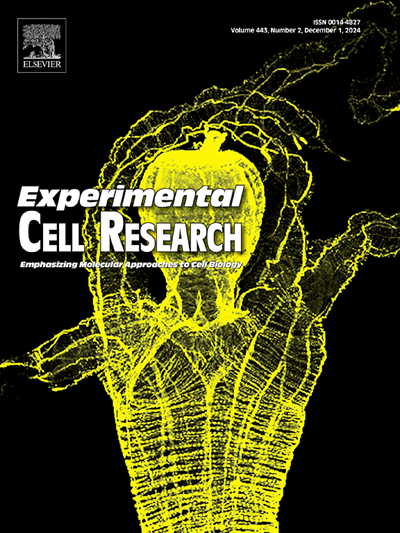多发性骨髓瘤小生境弹性蛋白减少促进细胞增殖。
IF 3.3
3区 生物学
Q3 CELL BIOLOGY
引用次数: 0
摘要
多发性骨髓瘤(MM)恶性浆细胞在骨髓(BM)中积累,它们与微环境的相互作用促进了疾病的进展和耐药性。先前,我们已经证明骨髓间充质干细胞(BM-MSCs) (MM和正常供体- ND)衍生的细胞外基质(ECM)对MM细胞系的影响不同,MM- mscs的ECM导致了促MM效应。在这里,我们研究了BM-MSC的ECM的组成(ND与MM),重点是弹性蛋白(ELN)。分离的MM- mscs的ECM质谱(蛋白质组学)显示,在来源依赖的方式下,蛋白质库存在明显差异(MM或ND-MSCs),其中ELN是MM- mscs ECM中减少最显著的蛋白质。为了研究这一现象,我们培养了MM细胞系(MM1S, rpm -8226)和BM-MSCs,并检测了细胞的表型。我们证明,向MM细胞系补充ELN可减少活细胞计数并增加细胞粘附。ELN也能抑制MM-MSCs的增殖,但对ND-MSCs没有影响。重要的是,在MM- msc ECM中添加ELN可消除其对MM细胞增殖的促MM作用。这些新发现强调了ELN在MM中的抑制作用,并表明它可能具有潜在的诊断和治疗目的。本文章由计算机程序翻译,如有差异,请以英文原文为准。

Reduced elastin in multiple myeloma niche promotes cell proliferation
Multiple myeloma (MM) malignant plasma cells accumulate in the bone marrow (BM) where their interactions with the microenvironment promote disease progression and drug resistance. Previously, we have shown that bone marrow mesenchymal stem cells (BM-MSCs) (MM and normal donors- ND) derived extracellular matrix (ECM) affected MM cell lines differentially with a pro-MM effect attributed to MM-MSCs' ECM. Here we studied the composition of BM-MSC's ECM (ND versus MM) with focus on elastin (ELN). Isolated BM-MSCs' ECM mass spectrometry (proteomics) demonstrated distinct differences in proteins repertoire in a source dependent manner (MM or ND-MSCs) with ELN being the most significantly decreased protein in MM-MSCs ECM. To study this observation, we cultured MM cell lines (MM1S, RPMI-8226) and BM-MSCs with/without ELN and assayed the cells' phenotype. We demonstrated that supplementing ELN to MM cell lines reduced live cell counts and increased cell adhesion. ELN also decreased MM-MSCs' proliferation but did not affect ND-MSCs. Importantly, ELN addition to MM-MSC ECM abrogated its pro-MM effect on MM cells' proliferation. These novel findings underscore a suppressive role for ELN in MM and suggest it may hold potential diagnostic and therapeutic purposes.
求助全文
通过发布文献求助,成功后即可免费获取论文全文。
去求助
来源期刊

Experimental cell research
医学-细胞生物学
CiteScore
7.20
自引率
0.00%
发文量
295
审稿时长
30 days
期刊介绍:
Our scope includes but is not limited to areas such as: Chromosome biology; Chromatin and epigenetics; DNA repair; Gene regulation; Nuclear import-export; RNA processing; Non-coding RNAs; Organelle biology; The cytoskeleton; Intracellular trafficking; Cell-cell and cell-matrix interactions; Cell motility and migration; Cell proliferation; Cellular differentiation; Signal transduction; Programmed cell death.
 求助内容:
求助内容: 应助结果提醒方式:
应助结果提醒方式:


